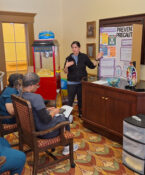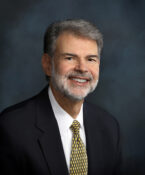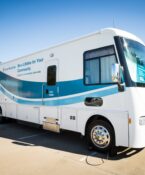How worried should you be about monkeypox?

- June 13, 2022
- By: Sally Crocker
- Community
The chances of most Americans contracting monkeypox are slim, says an epidemiology expert at The University of North Texas Health Science Center at Fort Worth’s School of Public Health.
Dr. Diana Cervantes, an assistant professor and director of HSC’s Master of Public Health graduate studies program in epidemiology, has long been involved in community response to outbreaks and infectious diseases.
Here, she responds to some of the most common questions people are asking right now about monkeypox:
What is monkeypox?
A: “Monkeypox is a virus in the same family of viruses that cause smallpox and cowpox. Monkeypox is not considered as severe of a disease as smallpox.
Monkeypox is a zoonotic disease, first transmitted from animals to humans. The CDC and World Health Organization report that it was discovered in the 1950s in colonies of monkeys, although it has also been found in squirrels, rats and other animals. The first human case was discovered in 1970. Past outbreaks have mostly been in West and Central Africa and have been mild.”
What are the symptoms of monkeypox?
A: “The virus usually begins like a severe case of the flu. You may feel very tired, experience body aches, fever, intense headache, swollen lymph nodes or other flulike symptoms.
“The telltale sign of monkeypox is a rash or sores that appear on the body within 1-3 days after a fever, producing flat, fluid-filled pustules that can last anywhere from two weeks to one month.
“A person is considered most contagious when these lesions are present. You remain contagious until the final scabs fall off and clear up into healed, healthy skin.”
How is monkeypox spread?
A: “The main source of transmission is through close, personal, skin-to-skin contact. It can also be spread by large-droplet respiratory secretions during prolonged, face-to-face contact. Monkeypox can spread during intimate contact between people, including during sex, as well as activities like kissing, cuddling or touching parts of the body with monkeypox sores. The sores can be visible anywhere on the body, as well as inside the mouth and in genital areas.
“Higher risks relate to sustained, long-term respiratory contact (being within six feet of an infected person for three hours or more), transmission from those who live in your house or a partner you share a bed with.
“This is different from what we have experienced with COVID-19 the last two years, which primarily passes from person to person through fine respiratory droplets and at times through airborne routes.”
Is there a vaccine?
A: “Yes. The FDA has approved the vaccine JYNNEOS to prevent monkeypox as well as smallpox, and another vaccine, ACAM2000, is also stored in the national stockpile. Older people who were vaccinated for smallpox before the early 1970s may have some cross-protective immunity as well.
“Monkeypox vaccines are different from COVID vaccines, as they can be given to a person after an exposure to prevent disease and break possible chains of transmission.
“Though health professionals working directly with monkeypox are recommended for vaccines and boosters, this virus is not easily transmitted and doesn’t carry the same concerns for most people — so vaccines for the public are being administered only for those with close contact to a monkeypox case at this point.
“We shouldn’t be as worried about monkeypox as we were with COVID-19. Generally, you wouldn’t get this virus from going to the grocery store, being in a restaurant or flying on an airplane, unless you were very close to someone, including skin-to-skin, for an extended time. While flight travelers are being notified of any positive cases out of the utmost precaution right now, there have been no reports so far linked to airline passengers.”
Final advice?
A: “It’s helpful to be aware of monkeypox symptoms, but there’s no cause for panic.
If you do have suspicions you may have been exposed, or if you have a new or unexplained rash, sores or other symptoms, visit your health care provider or local clinic. Avoid being intimate with anyone until you have been evaluated.
“If you or your partner are diagnosed with monkeypox, follow your provider’s treatment and recommendations. Avoid close, skin-to-skin contact with others until your rash has healed and a healthy layer of skin has formed.
“As with all viruses and diseases, information and recommendations may change as we monitor cases and learn more, so stay alert and follow the guidance of your local public health officials and health care providers.”

![Uyen Sa Nguyen Scaled[58]](https://www.unthsc.edu/newsroom/wp-content/uploads/sites/16/Uyen-Sa-Nguyen-scaled58-145x175.jpg)



Social media